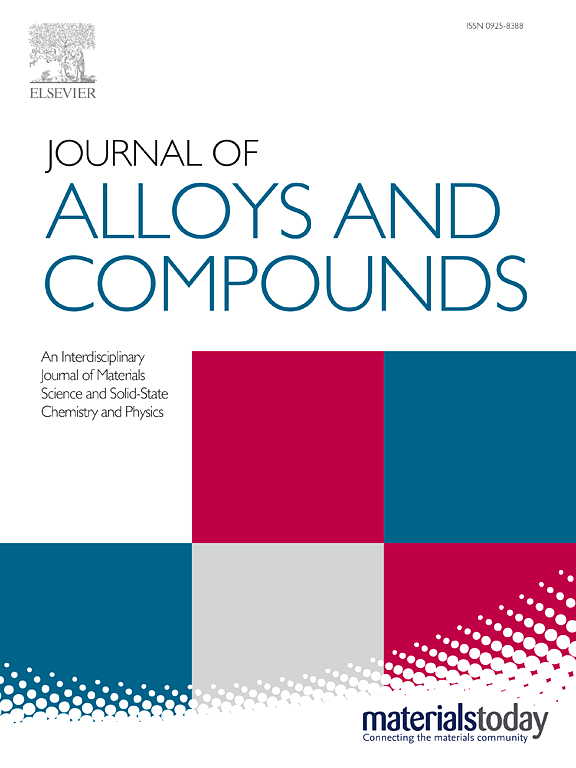L-ascorbic acid coupled graphene double carbon coating enhances the electrochemical properties of Na3V2(PO4)3 cathode materials
IF 6.3
2区 材料科学
Q2 CHEMISTRY, PHYSICAL
引用次数: 0
Abstract
Sodium vanadium phosphate (NVP) cathode material is highly regarded for its low cost and high current charge-discharge capabilities. However, its poor cycle performance hinders its application. In this paper, the carbon coating NVP is studied with L-Ascorbic acid (KC) as a carbon source, and the double carbon coating design is realized with reduced graphene oxide(rGO) to improve its electrochemical performance. The obtained materials are characterized by XRD, Raman, BET, XPS, SEM, EDS and TEM. The electrochemical performance of the samples is characterized by assembling into batteries. The results show that the amount of ascorbate can greatly affect the electrochemical performance of the electrode material. When nV:nC= 1:4.5, the obtained composite NVP@CKC-4.5 has the best electrochemical performance. The initial specific discharge capacity is up to 109.8 mAh·g−1 at 0.1 C. And its capacity retention rate after 100 cycles at 0.5 C rate is about 94.5 %. On this basis, graphene (in the form of graphene oxide) is introduced. When the amount of graphene oxide is 0.6 % of the total weight, the obtained NVP@CKC-4.5@rGO-3 composite has the best electrochemical performance. Its half battery charge and discharge rate, its initial discharge capacity increases to 115.4 mAh·g−1 at 0.1 C, and its capacity retention rate is up to 95.2 % at 0.5 C after 100 cycles, showing good electrochemical performance.
l -抗坏血酸偶联石墨烯双碳涂层提高了Na3V2(PO4)3正极材料的电化学性能
磷酸钒钠(NVP)正极材料以其低成本和大电流充放电能力而备受推崇。然而,其较差的循环性能阻碍了其应用。本文以l -抗坏血酸(KC)为碳源研究了碳包覆NVP,并利用还原氧化石墨烯(rGO)实现了双碳包覆设计,以提高其电化学性能。通过XRD、Raman、BET、XPS、SEM、EDS、TEM等手段对所得材料进行了表征。样品的电化学性能是通过组装成电池来表征的。结果表明,抗坏血酸的用量对电极材料的电化学性能有很大影响。当nV:nC=1:4.5时,得到的复合材料NVP@CKC-4.5具有最佳的电化学性能。在0.1 C条件下,电池的初始比放电容量可达109.8 mAh·g-1,在0.5 C条件下,电池循环100次后的容量保持率约为94.5%。在此基础上,介绍了石墨烯(以氧化石墨烯的形式)。当氧化石墨烯用量为总重量的0.6%时,得到的NVP@CKC-4.5@rGO-3复合材料的电化学性能最好。其充放电倍率为电池的一半,在0.1 C条件下初始放电容量提高到115.4 mAh·g-1,在0.5 C条件下循环100次后容量保持率高达95.2%,表现出良好的电化学性能。
本文章由计算机程序翻译,如有差异,请以英文原文为准。
求助全文
约1分钟内获得全文
求助全文
来源期刊

Journal of Alloys and Compounds
工程技术-材料科学:综合
CiteScore
11.10
自引率
14.50%
发文量
5146
审稿时长
67 days
期刊介绍:
The Journal of Alloys and Compounds is intended to serve as an international medium for the publication of work on solid materials comprising compounds as well as alloys. Its great strength lies in the diversity of discipline which it encompasses, drawing together results from materials science, solid-state chemistry and physics.
 求助内容:
求助内容: 应助结果提醒方式:
应助结果提醒方式:


